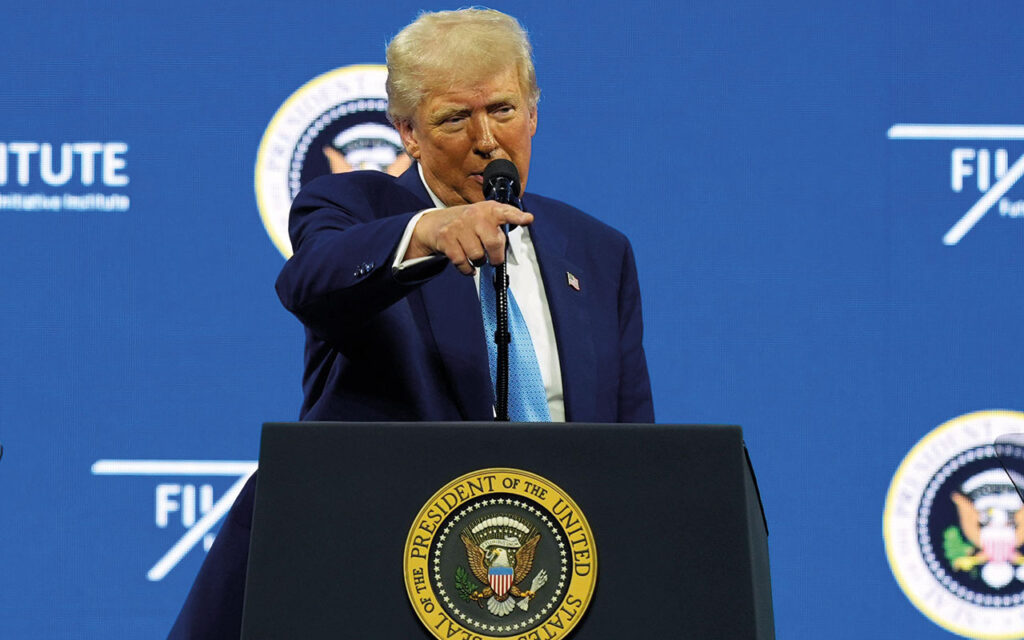Once again, it’s a pleasure to report to you on the happenings of the pork industry in Canada.
It seems like every time I’m asked to do this, we are exposed to some great challenges. I want to mention that I am writing this on February 15, 2025 – and the issues we are facing with the Trump administration in the US seem to be changing daily, if not hourly. In fact, this uncertainty may be the most challenging and stressful part of the whole process.
As I have previously reported, Canada is very dependent on trade with the rest of the world – approximately 70% of our pork produced is eaten somewhere outside of Canada. Of this, the US is the largest customer, even though a similar amount of pork is imported from the US into Canada.
In addition, there are a sizeable number of live hogs moving from Canada into the US either as iso-weans, a system that aims to avoid diseases by keeping weaned pigs separate from other age groups, or as market hogs for slaughter.
25% tariff
It doesn’t take much ingenuity to see that a 25% tariff, as proposed by Trump, would have a severe effect on this cross-border traffic, and would, without a doubt, raise the price of pork in the supermarkets to consumers in both countries.
This will be further exacerbated if Canada imposes reciprocal tariffs on US products coming into Canada. At present, there are great efforts by businesses from both Canada and the US and politicians to reason with the Trump administration to convey these thoughts and let good decisions prevail.
Speaking with some of our larger players, it seems they believe things will be worked out in some manner, either with the US and, if not, opportunities will arise, whereby we will be able to trade with other parts of the world to make up the shortfall.
For us in the meat sector, we are somewhat disappointed in the lack of meat products going from Canada to the EU countries and the UK.
Maybe this will get Canada and Europe to realise that we need to trade reciprocally for trade agreements to be of value.
I believe it is incumbent on the rest of the western world to look at working together on trade and security, because we can no longer predict what the US will do in the future. Working together has always been positive in my experience, and this is no exception.
Disease threat
Another topic that remains top of mind for the Canadian industry is the continued threat of foreign animal diseases and, most importantly, African swine fever. Much work has been done in our country to develop plans to combat an outbreak.
The Canadian Pork Council, together with the Canadian government and the provincial associations, have developed zoning and plans if an outbreak were to occur. Some agreements where other countries recognise zoning have already been signed and more will hopefully be agreed in the future.
Other diseases like porcine epidemic diarrhoea and porcine reproductive and respiratory syndrome still exist in our country, but through our extremely strong biosecurity protocols these are kept to relatively isolated outbreaks and have a fairly minor effect on our overall production.
On the animal welfare front our industry is steadily moving over to loose sow housing and we should be on schedule to have made this transition. In general, our antibiotic use also appears to be reducing because of strong biosecurity and our natural protection, provided by a vast country with lots of room for our livestock facilities.
Canada is just in the process of selecting a new prime minister and that will most certainly be followed by a general election. As elections never have a certain outcome until the voting is complete, it will determine where we go forward with our carbon pricing.
At present, there is a carbon tax that has fallen far short of expectations. Both political parties are now campaigning to remove this tax, which has been hard on the agriculture industry, but most specifically on the swine sector.
In our cold climate, we require a lot of heat for our houses and barns, and the carbon tax has affected our bottom line immensely, but has not cut fuel use. Again, politicians coming up with idealistic solutions that don’t always work in the real world.




